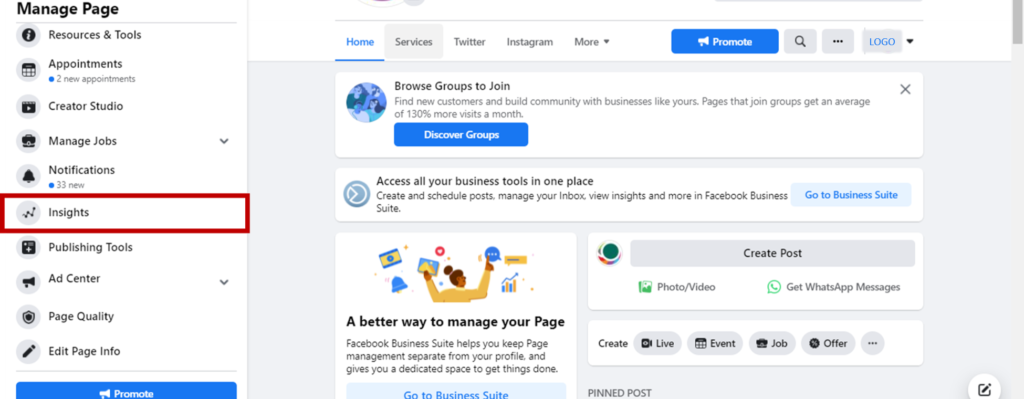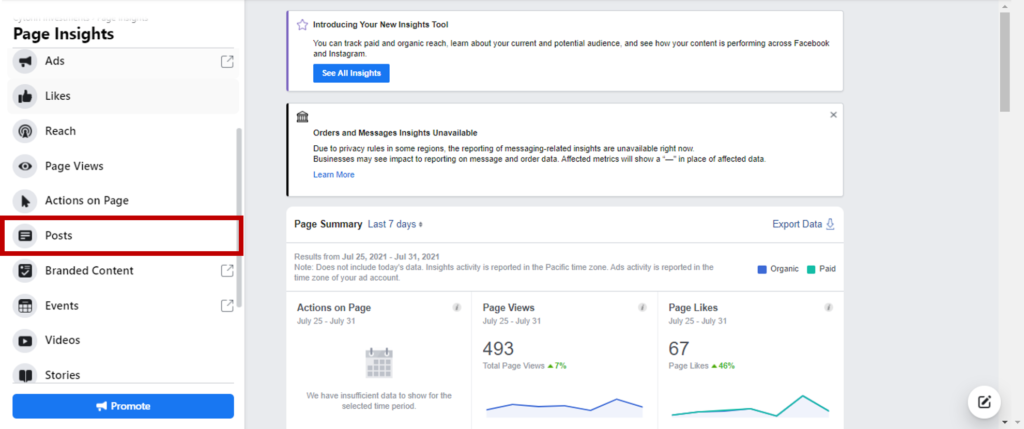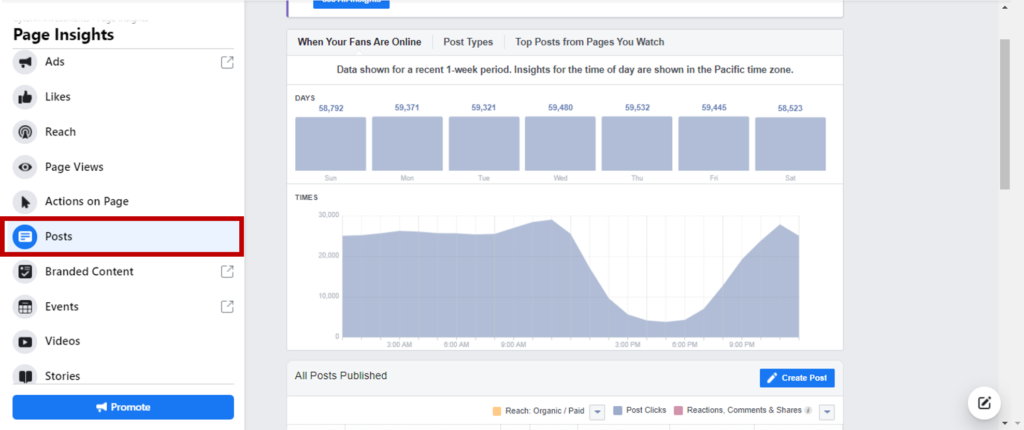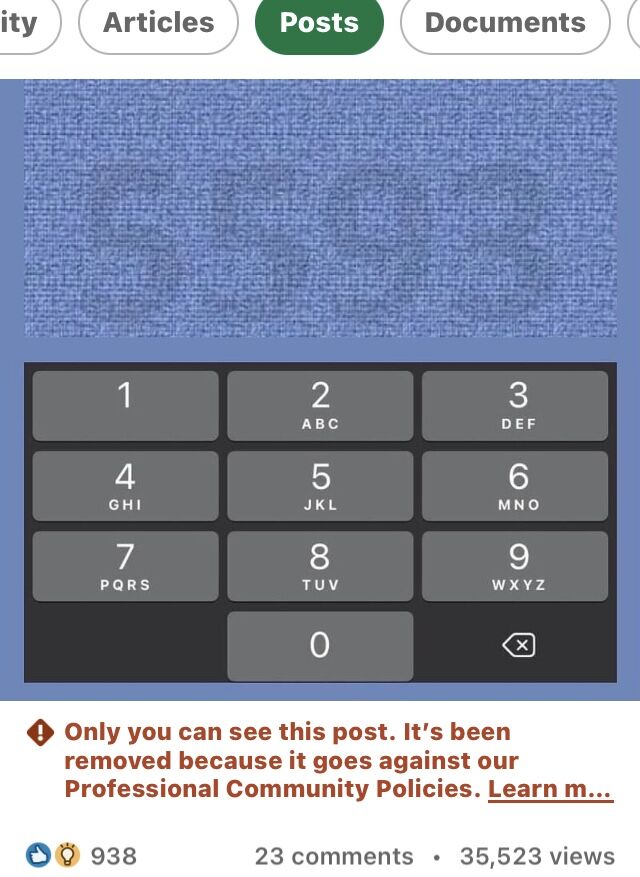As of 2020, Facebook had 2.7 billion monthly active users. That’s almost everyone in China and everyone in India combined.
A third of this population are on Facebook every day—that’s roughly 1.82 billion daily active users.
Yep, a helluva-lot of people use Facebook on the daily. And those who don’t use it live with somebody who does. From time to time, they sneak a peek at the photos and posts on their “roommate’s” Facebook account.
The average user has 338 friends and spends at least 20 minutes a day on Facebook either on their desktop or mobile app.
It’s hard to ignore the potential of Facebook as a platform for getting customers for your business when there are that many prospects spending that much time there. Over 50 million businesses already have Facebook pages. In a survey of B2C marketers, 94% said they use Facebook as a content marketing platform.
Facebook drives business results. You can build relationships with your prospects and improve your chances of making sales as a brand with a Facebook page. And as traffic flows from this powerful platform to your website, it could boost your organic search engine ranks, click through and conversion rates.
But there’s a catch:
The more people and businesses get active on Facebook, the more the content created. That translates to greater competition among brands for customers’ attention.
Your average user sees 1,500 posts on their news feed everyday—and if they have more friends that number shoots up to 15,000 posts!
Can you imagine scrolling through 15,000 Netflix film recommendations just to find one you like? You wouldn’t even get to the 50th option before your brain starts to fog over.
So Facebook’s algorithm tried to reduce this number to about 300 posts a day—for obvious reasons. The algorithm tracks user actions to determine which posts to show them in future and which ones to eliminate.
Now that the playing field is smaller, the trick is to increase the organic reach of your Facebook posts.
In this post, you’ll learn how to create the kind of posts that your audience engages with—posts that get them to do the hard work for you by spreading the word to their network of friends.
Posts that don’t get lost in the content sauce.
What does post engagement mean on Facebook
Post engagement means Facebook user interaction with your posts that goes beyond transactions. It includes all actions that users take on your posts like reacting to, commenting on or sharing the posts, claiming offers, viewing photos or videos and clicking on links.
It’s easy to just focus on the numbers. But as an entrepreneur, you have to remember that behind all that data are humans. People who are looking up to you to be their guide, offer them advice and care. They need someone they can trust and who they believe has their best interests in mind.
If you connect with these people in the right way, they become your Superfans—your biggest supporters. They share your content, not just for the sake of it, but because you made a difference in their lives.
But to get friends of your audience to see your content—and get the widest possible Facebook reach—your content must be shareable.
People don’t supermagically convert to your biggest fans overnight. They grow into “superfandom” one magical moment after the next—one engaging Facebook post after another.
For people to engage with your page, your content must be relevant to them. You need to:
- Make them aware of a problem they didn’t realize they had
- Recommend possible solutions to a problem they have or
- Present your product or service as one of the potential solutions and
- Demonstrate the value of your solution and why they should choose you over all others
The more relevant your posts, the higher the engagement on your page will be.
Engagement matters for your business because it helps increase organic reach—the Facebook algorithm displays your posts to even more people without you having to spend money to run ads. And as a bonus, the more your post gets likes and shares, the more it’s exposed to your audience’s extended network.
To boost your post engagement on Facebook, it’s important to first understand how much interaction your posts currently receive. You determine the level of post interaction using the engagement rate.
How to calculate your Facebook engagement rate
Engagement rate measures the amount of interaction a post earns relative to reach (number of people who saw the post) or other audience figures. Interactions include reactions (likes, love, wow, etc.), comments, shares or other actions proving that your post resonates with those who see it.
And that’s exactly what your engagement rate does—it shows how relevant your content is to your audience. It also shows the nature of your relationship with your followers. You may have legions of followers, but it doesn’t mean much for your business if they don’t care about your content.
You need audience interaction. If your audience takes time to comment on or click a link on your post, for example, it means that they are paying attention to what you have to say. Commenters, sharers, or link clickers are often the same people who turn into your customers later on.
There are as many ways to measure your engagement rate as there are social media objectives. You can measure engagement by how often your post appears on your audience’s feed (impressions), how many people see your post (reach), and so on and so forth.
But for those of us who’d rather chew off our eyelids than deal with data and analytics, Hootsuite has a very handy engagement rate calculator that simplifies this process altogether.
Assuming you now have a rough idea about how much interaction your content is getting (optional), let’s dive into how to make your posts shareable and improve engagement.
How to Boost Engagement on Your Facebook Posts
Strategy #1: Show some brand personality
You’re much more likely to get people to interact with your posts if they are humorous or display emotion. If your best friend was asked to describe your personality, they’d likely list some of your characteristics—they might say that you’re funny, kind, bubbly, stubborn…it goes on.
A brand personality is no different—it’s giving your brand a set of human characteristics that make it more relatable. As humans, we’re wired to connect with those who seem to share our traits. So when your content shows the personality of your business, it becomes more persuasive.
That’s why you’ll find posts from different companies that contain emotional appeal, humor or just casual banter. This humanizes the company and makes it easy for people to connect with its brand.
Here’s one good example of a brand—Lucky Brand (no pun intended, that’s really their name)—letting some of that good ol’ brand personality shine through:

Plain, informational content like prices or deals get little to no engagement when they lack attributes of brand personality. You might be lucky and get a few link click throughs, but the goal here is to amplify the number of people who see your posts.
You’ll only be able to increase your reach and build a relationship with your audience if your content resonates with them.
Strategy #2: Ask your audience a question
What this does is create room for dialogue and gives your audience a chance to open up to you.
It’s a strategy that’s proven effective even for heads of state, diplomats and embassies across the world. As at 2015, there were 228 foreign ministers, 400 heads of state and over 200 missions to UN institutions with active Twitter accounts—these numbers have definitely increased in recent years.
Leaders are promoting dialogue with their followers and developing lasting relationships with them by asking the right questions. These relationships later drive people to accept new policies. Questions promote dialogue which, in turn, helps leaders better understand the needs of their followers and tailor their messages more effectively.
So ask your audience a question and let them open up to you. That’s how you learn about the issues they’re facing and are able to create the right solutions for then. And when you do, they will reward you with their loyalty.
In the post below, Scholastic asks their audience, “What will you read today?”

Strategy #3: Post when your audience is online
Knowing the best time to post on Facebook could help your business gain increased visibility.
Many studies have tried to find that single best time to post on various social media platforms. This research by Buffer, for example, found that the best time to post on Facebook was between 1pm and 3 pm on weekdays and Saturdays.
Some other studies include:
- HubSpot – from 1pm to 3 pm on Thursdays and Fridays
- TrackMaven – at 8pm on Thursdays
- CoSchedule – from 1pm to 4pm late into the week and weekends (what does that even mean)
- Buzzsumo – off-peak hours
With all these different “best” times to post, it can get confusing to find the day and time that works best for you. In reality, the optimal posting times depend on various factors unique to each business—like your industry, location your audience is based, time they’re online and so on.
Let’s flip this notion of a single best time to post on it’s head:
Instead of relying on a single study, focus instead on the best time for your brand to post on Facebook. Find the best time for you by listening to what your data is telling you.
Your data is the best data. And the first place to look for it is in your page’s Facebook Insights.
Facebook has a gold mine of data to help you understand your audience as a page admin or owner. You also get to see how your content is performing—way better than the generic insights drawn from studies that may not even be specific to your own industry.
To access Facebook Insights, scroll down the “Manage Page” list on the left side of your page till you find the “Insights” option:

Click on the option to go to the Insights dashboard, scroll down the “Page Insights” menu on the left and select “Posts”:

You’ll now see a breakdown of the days and times that your peeps are most active on Facebook:

In the example above, you’ll find that the best time for this brand to post is Monday to Sunday from 7pm to 11am.From around 11am, the brand’s audience online gradually decreases until around 7pm when that number starts to rise slowly.
Take a look at your own data and test different times between your best hours to find what works for you. And when you start posting, monitor how your posts perform and tweak as you go.
Bonus tip: Take a swing at off-peak hour posting
Another experiment you could try is posting during off-peak times—the low hours.

Buzzsumo did a test to see how their posts performed if posted during low hours.
They found that posting during these times, like very late on Sunday night, led to increased engagement.
Try it and see if it works for you. Then let me know what happens.
Something to keep in mind as you post:
Your content should be timely.
Take the example of sports teams that share their scores while the sports are live.
The same applies to your business. Some posts will do better when they’re relevant. Say you are doing a product launch. It would only make sense to post launch-related content directly after the announcement, right?
Strategy #4: Build a Facebook Group for your Page
“In a world where power and influence truly belongs to the many, we must engage with more people in more places. [. . .] People all around the world are clamoring to be heard. [. . .] They are having important conversations right now [. . .] and they aren’t waiting for us”
Craig Hayden
A Facebook group is one of the best ways to generate engagement on your page. With a FB group you can:
- Build relationships with your audience
- Get feedback from customers and
- Strengthen your brand
As people participate in a brand community such as a Facebook group, their loyalty to your brand increases and their relationship with you solidifies.
Members of your Facebook group will be people with a shared interest in what you do—they form a tribe with its own values and lingo around your brand.
By creating a Facebook group, you’ll be giving your audience a chance to form a tribe. Your peeps will be able to:
- Learn about your product offerings
- Share their personal experiences
- Help each other resolve problems or
- Just have a place to lurk and read others’ comments
Yep, there’s always going to be lurkers—you know, the silent ones who just listen to what the rest of the tribe is saying and never chip in?
And you need them too. Lurkers are actually more loyal to your brand than commenters as this research found. [insert link to study, Shang et al. 2006].
Strategy #5: Don’t post engagement bait
Whatever you do, never ever ever never ever—and I can’t stress this enough—never post engagement bait.
Big Brother aka Facebook’s algorithm will penalize you. You’ll hurt your chances of increasing your reach and winning your posts some of that audience love.
Engagement bait means posts that manipulate people into interacting through shares, likes or comments and providing nor value in return.
People who create posts like these are just trying to artificially boost engagement and increase their reach. It’s the social media equivalent of black hat SEO practices—cheating the system, so to speak.
There’s always hell to pay for such practices. The algorithm detects this kind of posts and demotes both the post and page it came from.
Here’s an example from LinkedIn that I fell for:

When I dialled the number starting with 55 I ended up double-clicking on the post which translated into a “thumbs up” for the post. My intention was to dial the number and see what happens but felt very cheated when I ended up liking the post by mistake instead.
No one likes spammy posts like these that goad you into interaction. That’s why Facebook tries to identify and demote engagement bait.
Some common types of engagement bait are:
- React baiting – Asking someone to react to a post with a like, love, wow, haha, sad or angry face (like the example above)
- Comment baiting – Asking for comments with a specific answer such as a number, word, phrase or emoji
- Share baiting – Goading people to share a post with their friends
- Tag baiting – Asking people to tag their friends
- Vote baiting – Almost the same as react baiting in that the posts asks you to vote using a reaction, comment or share as a way to represent your vote
But don’t confuse engagement bait with clickbait.
Clickbait usually refers to headlines that prompt you to click on them by withholding important information intentionally. Other headlines entice you to click by exaggerating the benefits and creating misleading expectations.
Engagement bait is content that prompts reactions but provides no value, whereas clickbait is a headline that prompts clicks through misleading expectations.
Sure, the bait will increase your engagement for some time. But when Facebook realizes what you’re doing, you could lose even the engagement you got genuinely. It’s not a risk worth taking.
Avoid both engagement baiting and click-baiting and just focus on posting content that is meaningful to your audience. And your peeps will reward you with their authentic engagement, loyalty and spread good tidings about you.
Go ahead and steal one of these strategies. Apply it to your next Facebook post.
I’d love to hear which strategy worked best for you. Hit me up in the comments section.

